More Intake Fans or Exhaust Fans PC | Factors to Know
Fans are essential for keeping computer parts cool, which is no secret. Exhaust fans push heated, stale air or air tainted by manufacturing or industrial operations out of an area while intake fans pull in fresh, clean air.
At least one intake and one exhaust fan are required in a typical desktop PC. For single-fan operation, an intake fan can be used. Although the direction of airflow whether it is being pushed in or drawn in really doesn’t matter to dust, the air’s origin and destination are important.
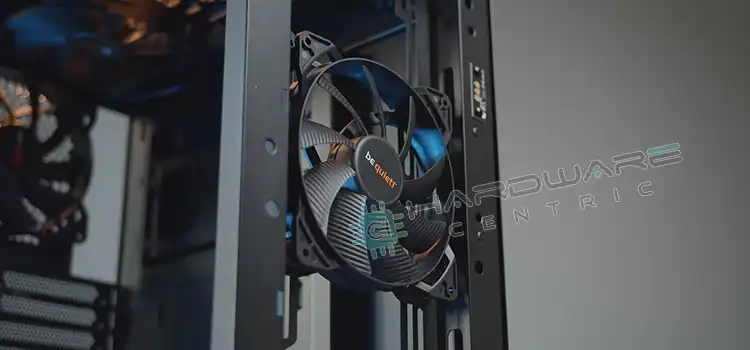
What Are Intake and Exhaust Fan
The hot air that is removed by a heatsink from the relevant components often hangs around and warms the PC’s interior. This indicates that the fans are using the “old air,” which isn’t optimal, to cool the system.
Even if there are no heat-related problems, the user may notice that the system becomes a little too warm when engaging in intensive system tasks. It could be worthwhile to look into the possibilities of including intake and exhaust fans in the computer in this situation.
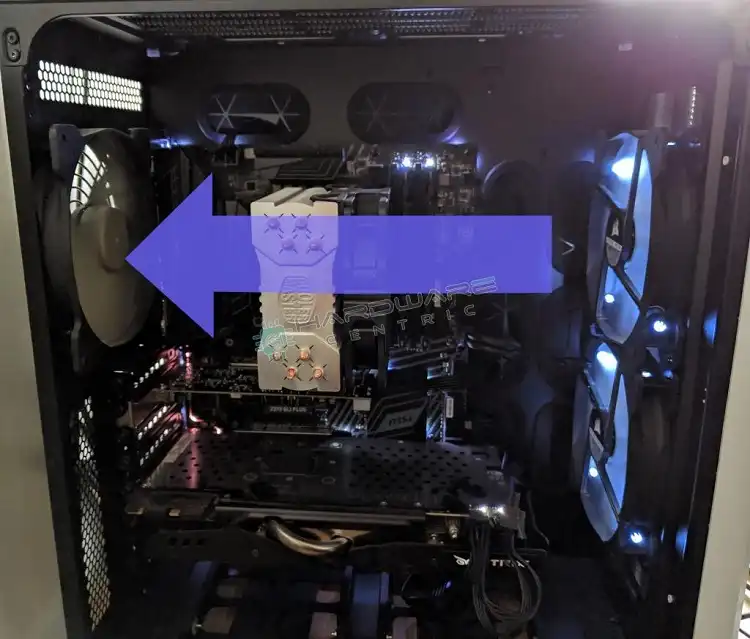
The ideal ventilation system will combine both types, working together to immediately replace the air that was withdrawn in order to prevent a negative pressure condition.
Numerous problems, including increased humidity and the development of mold and mildew, can be brought on by negative pressure. Of course, these fans also contribute to more comfortable environments and regulated temperatures.
Therefore, it’s crucial to include fans that either remove this prevailing heat or bring in new, cooler air for utilization. Intake and exhaust fans serve this purpose. In terms of quantity, the user should typically have at least 2 filtered fans performing intake and exhaust duties.

Intake Fans or Exhaust Fans
The direction in which the air is being moved by the fan is the main distinction between these two versions. In a nutshell, intake fans carry warm, stale air or air tainted by manufacturing or production operations out of an area, whilst exhaust fans bring it in.
The fan will function regardless of whether the side is put towards the case, and the fan unit itself should indicate in which direction it pushes air. Therefore, a user may purchase two of the same fan. Simply set up one to pull air in, and the other to push air out.
Consideration 1:Ventilation
Depending on preference, users may want to use a mechanical ventilation system or stimulate airflow through natural ventilation. Each method has advantages and disadvantages of its own, and many operations choose to combine the two.
The amount of maintenance the user is willing to do for the fans and the function of the metal building will determine a large portion of that choice. When dealing with hazardous gases, extremely high temperatures and humidity, and similar conditions, power vents are frequently the preferred choice.
Consideration 2: Case Compatibility
All fans are not created equally. If the computer has locations where fans may be mounted, it must be sure to measure the horizontal distance between the two screw slots and purchase a fan that fits that size.
A 120mm fan will fit if the user measures 120mm between the two adjacent screw holes. Additionally, it must be confirmed that the fan is not a CPU cooler.
Consideration 3: RPM, CFM, dBA
A fan’s rotational speed is determined by its revolutions per minute (RPM). The higher this number, the faster the fan will spin. The decibel statistic displays the maximum fan volume. It is essential to choose a fan with a low dBA if quiet fans are a top priority.
The amount of air that a fan can move in a minute is measured in cubic feet per minute (CFM). The fan will draw or expend more air depending on how high this setting is set. The more the merrier in this instance.
Consideration 4: Positive or Negative Pressure
When there are more intake (air-bringing) fans than exhaust (air-removing) fans (pushing out air), the fan arrangement is positive pressure. The reverse is a negative pressure fan configuration, where more fans are used for exhaust than for intake. A positive pressure system will generally be superior to a negative pressure setup.
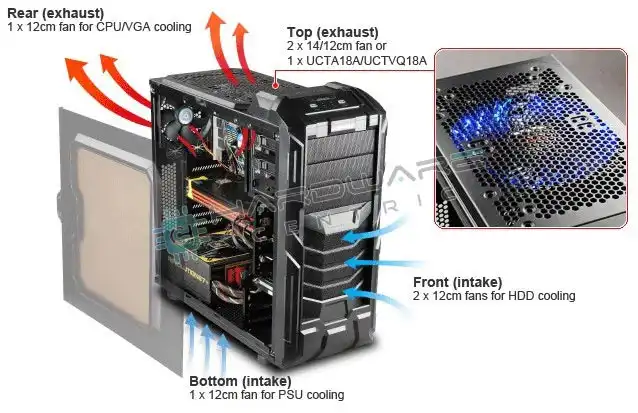
The goal of positive pressure is to have more air being drawn in than being expelled, which causes hot air to rush out of cases in an attempt to escape. As long as the case cables are neatly organized and not in the way of airflow, it blows air out of any openings that allow it and keeps the computer cool.
If a user has more exhausts than intakes, all of the air and dust try to enter the case through any gaps that aren’t filtered, which means the user will need to clean the computer more frequently and the heat may not be dissipated as effectively.
Frequently Asked Questions And Answers
Are intake or exhaust fans more important?
Most people recommend having more intake fans than exhaust fans because it creates a negative static pressure that makes it less probable for dust to enter the computer.
Are 2 intake fans and 1 exhaust fan enough?
Probably the optimal arrangement would be two intake fans and one exhaust fan. It would be highly inefficient to have three intakes but no exhaust.
Is it OK to have 2 intakes and 3 exhausts?
Having more exhaust than intake will result in negative air pressure in the device, and thus air will be pulled in through unfiltered areas. This way dust will build up more quickly. But performance-wise, it should be good regardless.
Should intake fans be faster than exhaust fans?
If the intake fans spin faster, the case has positive pressure and all the unfiltered gaps are blowing out air; if the exhaust fans spin faster, the case has negative pressure and all the unfiltered gaps are bringing in dirt and dust.
Conclusion
Using fans to lower the temperatures is an easy and inexpensive approach to do so when a computer starts to grow warm. However, utilizing a combination of intake and exhaust fans will be a smart idea to guarantee the fans create airflow within the system.
Subscribe to our newsletter
& plug into
the world of PC Hardwares
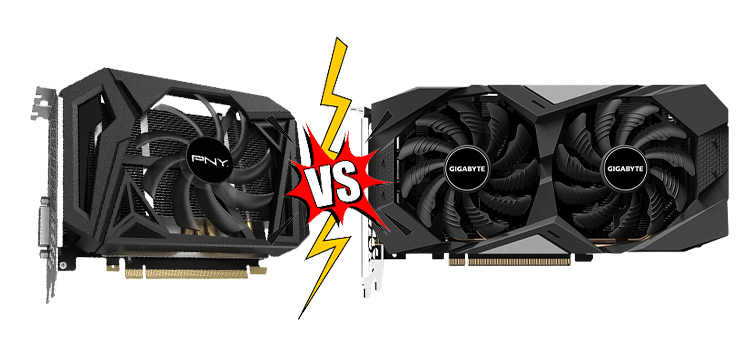
![[ANSWERED] Do I Need Thermal Paste for Ryzen 5 3600?](https://www.hardwarecentric.com/wp-content/uploads/2023/08/Do-I-Need-Thermal-Paste-for-Ryzen-5-3600.webp)
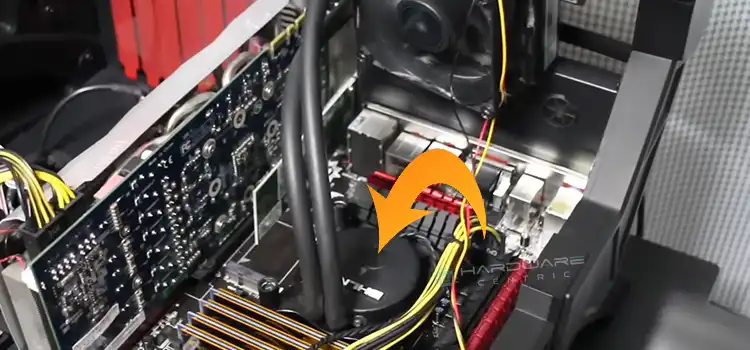
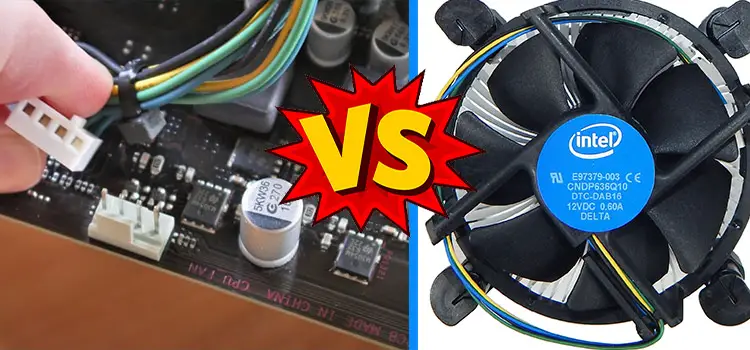
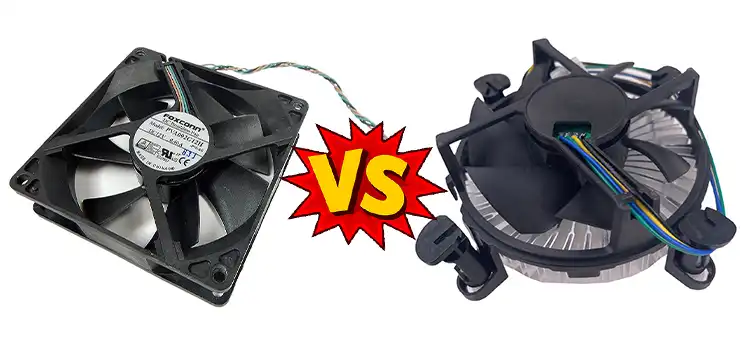
![[Explored] How Many Watts Does a Computer Fan Use?](https://www.hardwarecentric.com/wp-content/uploads/2023/09/How-Many-Watts-Does-a-Computer-Fan-Use.webp)
